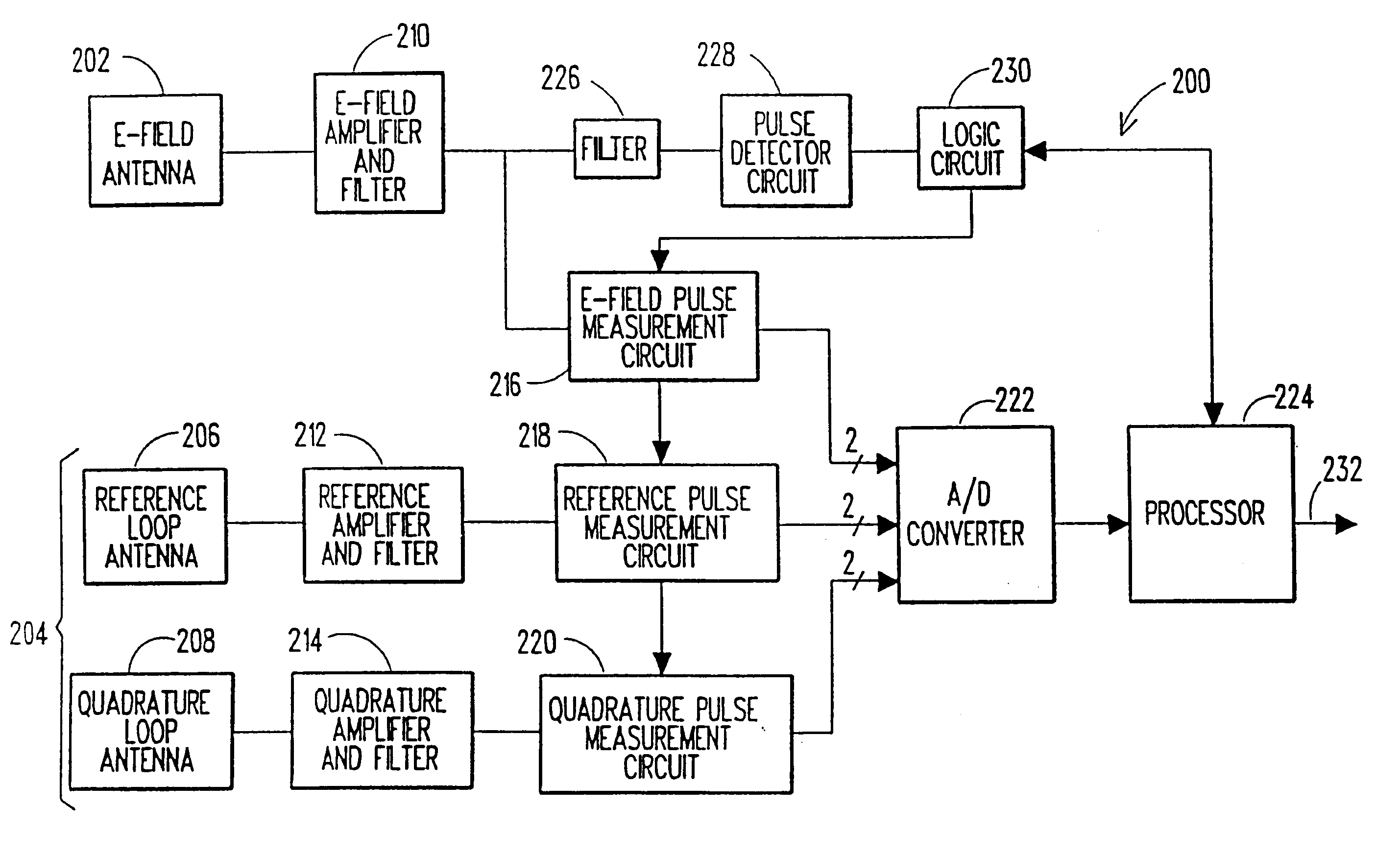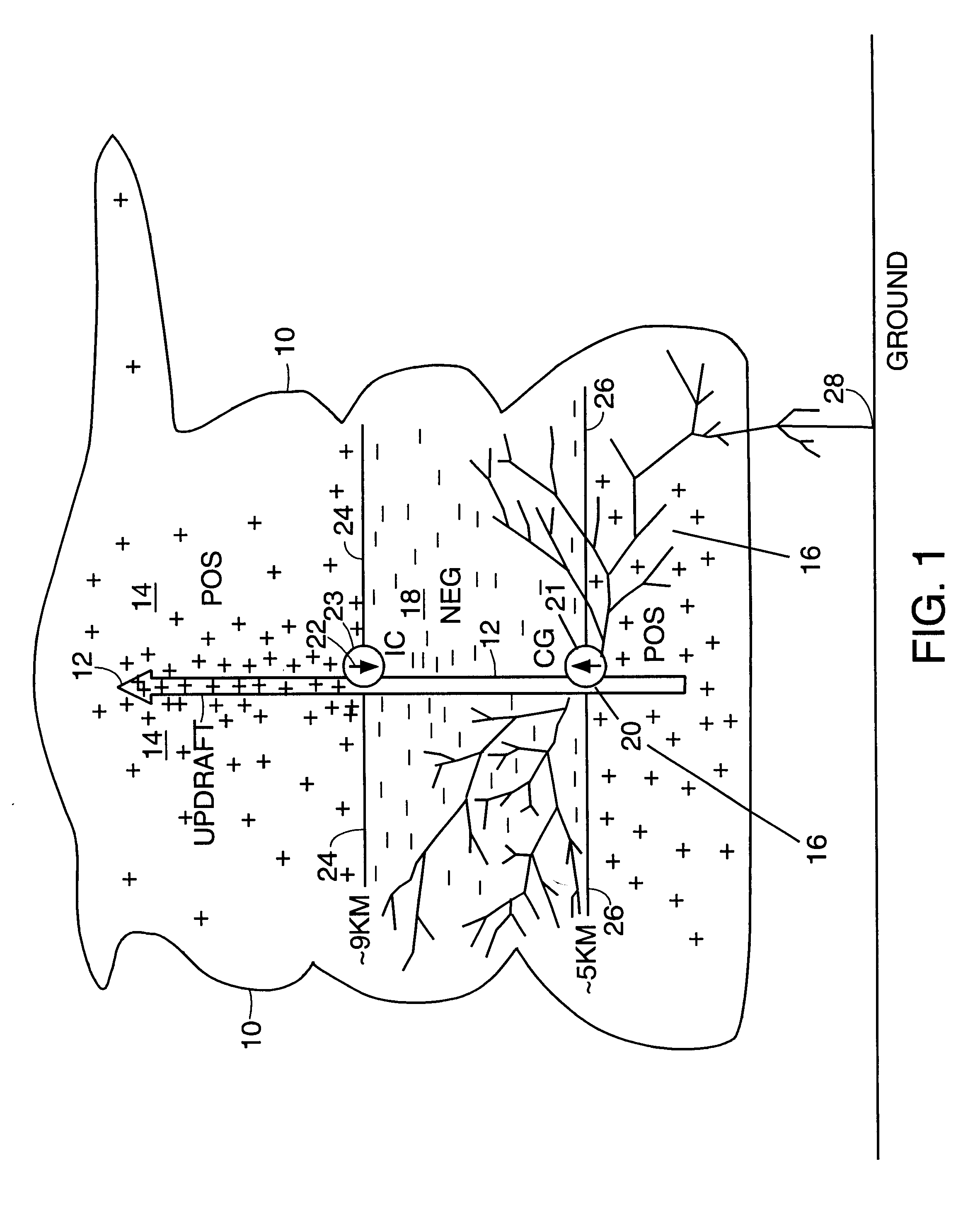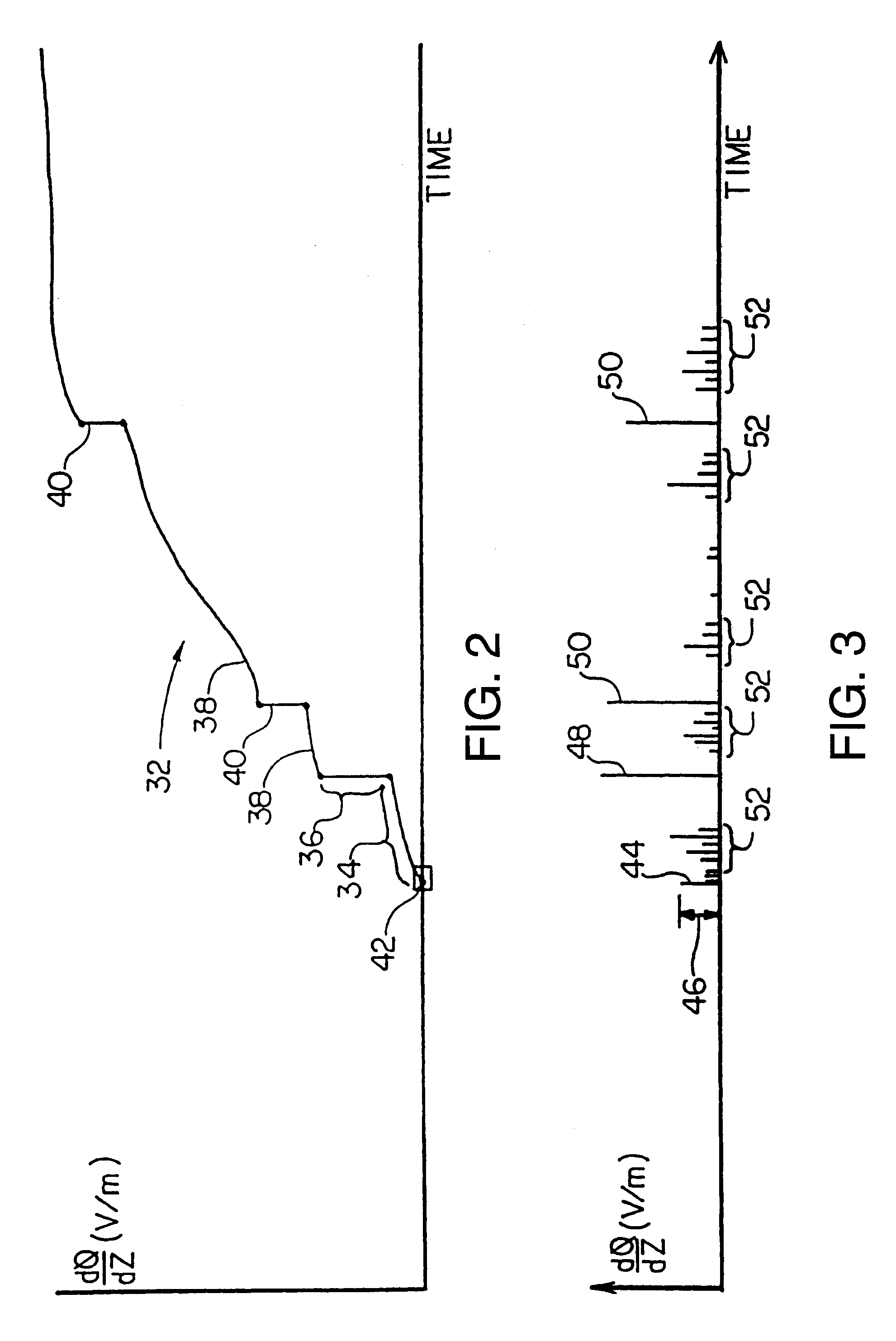Lightning locating system
- Summary
- Abstract
- Description
- Claims
- Application Information
AI Technical Summary
Benefits of technology
Problems solved by technology
Method used
Image
Examples
first embodiment
a lightning detection system 100 includes five sensors 102 and a master station 104 for collecting and processing data from the sensors. The sensors 102 are configured in spaced apart relationship wherein the exact location of each sensor is known to the master station 104. In an exemplary embodiment, sensors 102 are placed in a cross-configuration with one sensor centrally located within the cross and disposed within a twenty-five mile radius. A (Global Positioning System) GPS unit associated with each sensor can provide a location accurate to about fifty feet, but in an illustrative implementation, the accuracy of each sensor with respect to latitude and longitude is known to within 10 feet. Each of the sensors 102 is connected to the master station 104 via telephone line or by a RS-232 serial computer link 106. An RS-232 link is adapted for a sensor in the vicinity of the master station.
Different configurations of the sensors are possible in alternative embodiments. For a three-d...
second embodiment
FIGS. 10-14 illustrate a lightning detection system having a single sensor. Prior single sensor lightning detection systems have been unable to accurately provide range data for lightning due in large part to lightning variations in intensity and direction. The lightning detection system of the present invention takes advantage of the known characteristics of an initial pulse of a lightning discharge to determine the location of the discharge source and to infer the altitude from differentiating between an IC and CG pulse In particular, the initial lightning discharge is vertical with respect to ground and has a known amplitude that falls off as a function of distance. The initial pulse also has a known duration of about one microsecond or less. Furthermore, IC and CG discharges are distinguishable by polarity. The single sensor system is adapted for placement on an airplane or ground.
An exemplary single sensor lightning detection system 200 includes an E field antenna 202 and a cro...
PUM
 Login to View More
Login to View More Abstract
Description
Claims
Application Information
 Login to View More
Login to View More - R&D
- Intellectual Property
- Life Sciences
- Materials
- Tech Scout
- Unparalleled Data Quality
- Higher Quality Content
- 60% Fewer Hallucinations
Browse by: Latest US Patents, China's latest patents, Technical Efficacy Thesaurus, Application Domain, Technology Topic, Popular Technical Reports.
© 2025 PatSnap. All rights reserved.Legal|Privacy policy|Modern Slavery Act Transparency Statement|Sitemap|About US| Contact US: help@patsnap.com



